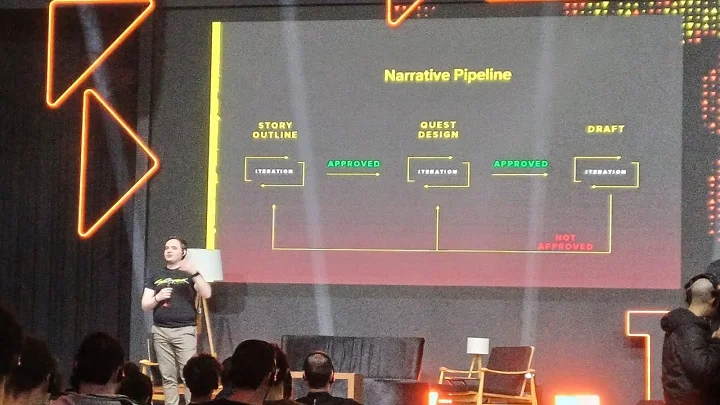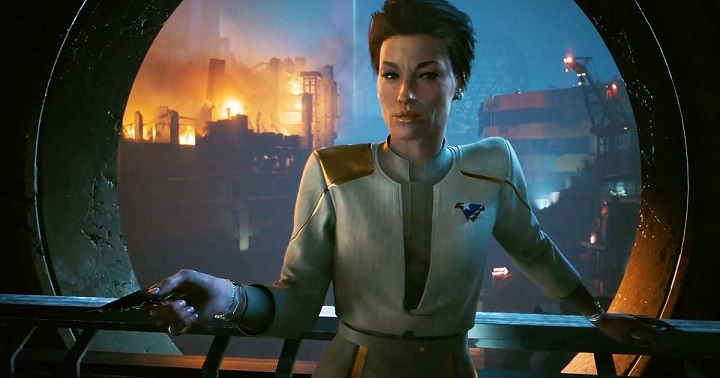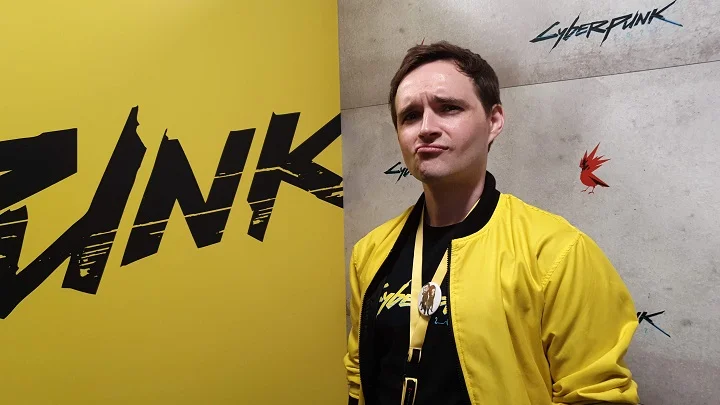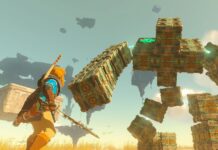[Interview] Pawel Sasko, narrative and quest designer at CD Projekt Red – In our site, we brought several articles with analyses and news announced during Gamescom Latam. The event, which took place between June 26th and 30th in São Paulo at São Paulo Expo, was very fun and had several attractions, ranging from game tests to lectures.
During our coverage, we had the chance to talk to Pawel Sasko. Sasko is the game director at CD Projekt Red and worked on the narrative and mission designs for games in the Witcher and Cyberpunk 2077 franchises. Check out our conversation with Pawel Sasko!
1) First, thanks for the interview, and I’d like to ask about the creation of the narrative part. When creating a game the size of The Witcher or Cyberpunk 2077, how do you know when to stop delving into the universe and focus on developing the game? How do you measure the point at which you need to stop expanding the story and start developing it properly?
The story starts as a one-page document about the flow of the story, what it’s going to be. We’re happy with that initial outline, and then we expand it to two pages, then four, eight, sixteen, twenty pages, and eventually we end up with a thirty to forty-page document that describes everything from start to finish. For the main story, we estimate that one page of outline is equivalent to one hour of gameplay. This method is only used for the main story, while side content has its own length measurements. If we have, for example, a side quest that lasts thirty minutes, and we know we have twenty pages, that results in five hours of gameplay.

We always try to gauge the length and breadth of the game, and it’s really tempting to keep adding stuff. But there comes a point where we have to say, “Okay, that’s enough.” In the process, we implement the mission scenarios and play through them to see if there’s anything missing or too much. We make adjustments as needed.
A good example is the dance scene with Alex in Phantom Liberty. We felt like we needed to add more about Alex, so we put that scene between V and Alex in during development. We build the narrative, and as we play through it, we observe and adjust what’s missing so that it all works well.
2)Is the process for creating DLC the same?
Yes, absolutely. Creating an expansion or DLC is really the same process as creating the base game. The only difference is that with side content, almost anyone can come up with ideas. Quest designers, open-world designers, cinematic designers, writers—anyone can contribute. For the main story, it’s always the writers who make it. But for the secondary content, we have many more designers contributing, which brings a lot of variety to the game, as each of us has different life experiences that inspire our ideas.

3)In both Cyberpunk and The Witcher, the main characters are very representative of the worlds they are part of. When you build a game of this size, what is the process for creating the characters? Which comes first, the world or the character?
That’s a great question. It’s like a chicken or the egg dilemma. The process happens at the same time. We start to outline the story and think about the characters at the same time. Characters are your most powerful weapon in telling a story. Players rarely remember complex plots, but they always remember the characters. So we build the plot and the characters together, adjusting one to the other until they both fit together well. For us, the characters are always more important, and the plot is secondary.
4)My last question is about the Cyberpunk universe. We started with the RPG, then the Cyberpunk 2077 game, and now we have comics, board games, and other products. How do you see these expansions coming to life?
Cyberpunk is a collection of many different stories. In the case of The Witcher, the story revolves around a small cast of characters like Geralt, Triss, Ciri, and Yennefer. In Cyberpunk, we have a world where several intriguing stories intersect. There are the games, the tabletop RPG, the comics, the board games, and the anime, and they are all part of this universe. We have a lore “bible” that ensures consistency between all these elements, making everything fit together in the same world. Cyberpunk is much broader and allows for many engaging and varied stories to be told.
5)And finally, Triss or Yennefer?
Shani. Shani is Geralt’s love interest in The Witcher 1 and I brought her back in Hearts of Stone, where I worked on the wedding mission. I really like Shani, so I chose her.

![[Interview] Will Brawlhalla continue to invest in esports? Joshua Kenneth answers! Brawlhalla](https://www.omegascopio.com.br/wp-content/uploads/2024/12/Brawlhalla-218x150.webp)
![[INTERVIEW] Shinichi Tatsuke, Producer of Romancing SaGa 2: Revenge of The Seven, Talks About the Challenge of Remaking a Classic Romancing SaGa2](https://www.omegascopio.com.br/wp-content/uploads/2024/11/romancing-thumb-218x150.webp)
![[INTERVIEW] Neil Newbon, Astarion from Baldur’s Gate 3, Played D&D as the Character at Gen Con Neil Newbon](https://www.omegascopio.com.br/wp-content/uploads/2024/11/Neil-Newbon-218x150.webp)


![[Interview] Bartosz Sztybor, writer and CD Projekt Red narrative manager Bartosz Sztybor](https://www.omegascopio.com.br/wp-content/uploads/2021/05/Entre-218x150.jpg)
![[INTERVIEW] Ishihama, director of Horimiya and Persona ENTREVISTA Ishihama, diretor de Horimiya e Persona](https://www.omegascopio.com.br/wp-content/uploads/2021/04/ENTREVISTA-Ishihama-diretor-de-Horimiya-e-Persona-218x150.jpg)
![[INTERVIEW] BEAST, the Black Clover episode 166 animator BEAST, o animador do episódio 166 de Black Clover](https://www.omegascopio.com.br/wp-content/uploads/2021/03/Yami-Beast-entrevista-218x150.jpg)
